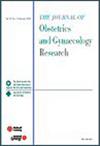The initial report of prospective study for maternal and fetal outcomes to investigate the safety of multifetal pregnancy reduction in Japan
Abstract
Aim
This study aimed to establish the safety of multifetal pregnancy reduction (MFPR) and examine its complications, patient background, and psychological impact.
Methods
This single-center, single-arm, prospective intervention study included 10 women who were treated at our institution between April and December 2024. The indications were triplet or higher-order multiple pregnancies, as well as twin pregnancies with serious maternal complications. Procedures were performed between 11 and 13 gestational weeks, and the patients were observed for up to 1 week postoperatively. The primary outcome was the completion ratio at hospital discharge, whereas the secondary outcomes were the survival rate of non-targeted fetuses, the number of adverse events, and the psychological evaluation of the patients at 1 week postoperatively.
Results
Among the 10 patients, one carried twins, seven carried triplets, and two carried quadruplets; half had received ovulation-induction treatment. The procedure completion rate at discharge was 100%, although one patient required reoperation. The survival rate of non-targeted fetuses was 89.5% (17/19), and adverse events included vaginal bleeding and complete miscarriage. Maternal state-anxiety scores decreased significantly postprocedure, whereas depression scores remained elevated both before and after the procedure.
Conclusions
The completion rate of MFPR using echo-guided transabdominal potassium chloride infusion was high, ensuring short-term maternal safety. Although no serious adverse event other than one case of total miscarriage was observed, a long-term safety evaluation is warranted. Moreover, the emotional burden on patients is high before and after the procedure, necessitating the importance of long-term support.


 求助内容:
求助内容: 应助结果提醒方式:
应助结果提醒方式:


